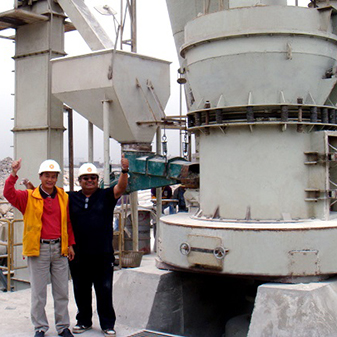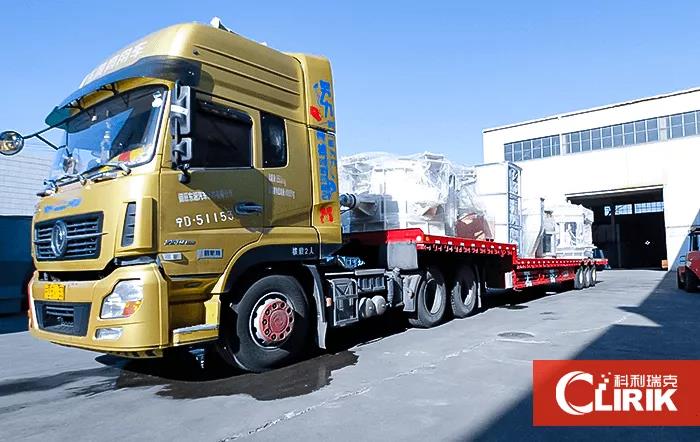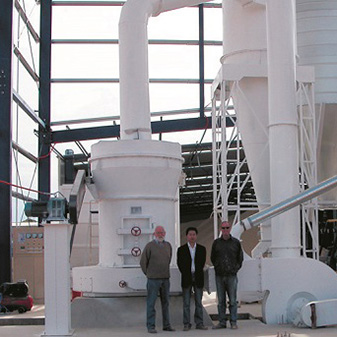In modern industry, ultrafine powder has been unknowingly integrated into it, such as papermaking, paper sizing generally needs to add 10% - 20% ultrafine powder, in coated paper, kaolin (or calcium carbonate) ultrafine The amount of powder added is as high as 40%. Another example is plastic products, the amount of modified superfine powder can be as high as 30% - 50% according to different product requirements. In addition, ultrafine powder is widely used in plastics, rubber, electronics, cables, paints, coatings, abrasives, pharmaceuticals, cosmetics, ceramics, building materials, food processing and household appliances. For example, the production of flour in the United States stipulates a certain amount of talcum powder Addition amount: Adding ultra-fine powder of more than 6000 mesh to plastic products can not only improve physical indicators such as product appearance size, smoothness, color, and hand feeling, but also improve product strength, elasticity, flexibility and anti-aging ability. Ultrafine powder processing requires high fineness, which is a big challenge for the processing technology of ultrafine powder processing equipment-ultrafine mill.
CLIRIK mills for various materials such as talc can accept non-flammable and explosive materials below 20mm and Mohs hardness below 6. The crushed raw materials are mainly crushed calcite, gypsum, talc, feldspar, barite, kaolin and other materials. Due to the major changes in the grinding roller and the grinding roller assembly of the main engine, the material has to go through many times from top to bottom. Grinding makes full use of the centrifugal force of the grinding roller, and has a large contact area with the grinding ring, so it can produce high-fineness powder with a fineness of 5-45 microns. Its design has changed the structure of the traditional grinding machine. The grinding roller and grinding ring are made of hard alloy, which greatly prolongs the service life and does not require frequent replacement of wearing parts, which greatly improves the use efficiency. In some ranges and fields, it can replace jet mills produced in the United States, and has high economic value.
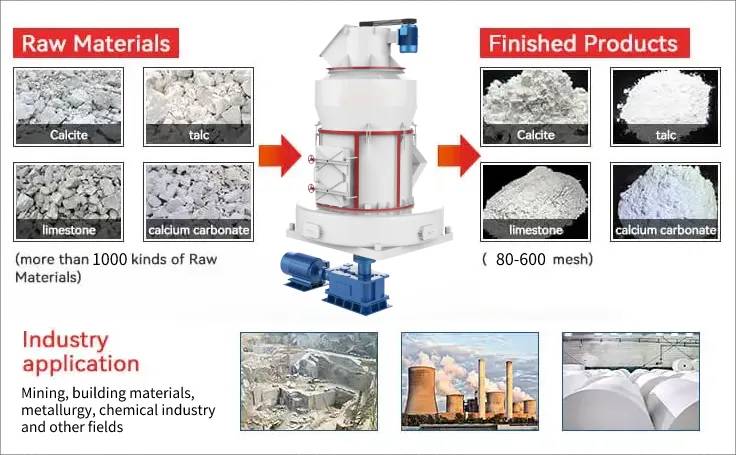
CLIRIK's talc Raymond mill is a high-fine powder milling equipment suitable for closed-circuit circulation in small and medium-sized mines, chemicals, building materials, metallurgy, refractory materials, pharmaceuticals, cement and other industries. It is a new type of mill that replaces ball mills for grinding. Machines, the output and energy consumption have reached the national standard, ranking at a relatively high level in China, and are highly praised by users in various industries. The Raymond mill adopts the structure of similar foreign products, and is updated and improved on the basis of large-scale Raymond mills. It has higher efficiency than ball mills, low power consumption, small floor space, and small one-time investment. During the processing, the grinding roller of the Raymond mill is tightly crushed on the grinding ring under the action of centrifugal force, so when the grinding roller and grinding ring are worn to a certain thickness, the output and fineness of the finished product will not be affected, thus eliminating The disadvantage of the short replacement cycle of the wearing parts of the centrifugal pulverizer; in addition, the winnowing air flow of the Raymond mill is circulated in the fan-grinding shell-cyclone separator-fan, with less dust and clean operation workshop , less environmental pollution.
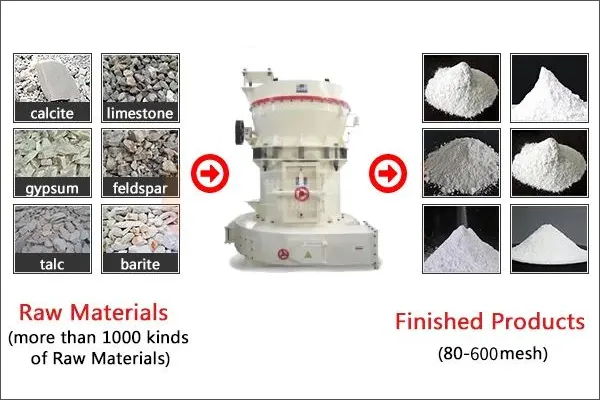
CLIRIK high-pressure suspension roller mill is a type of ultra-fine mill, suitable for the processing of various non-flammable and explosive ore raw materials with a Mohs hardness below 9.3 and a humidity below 6%. It is widely used in metallurgy, Building materials, chemical industry, mining, highway construction, water conservancy and hydropower and other industries, especially for processing quartz, feldspar, calcite, limestone, talc, ceramics, marble, granite, dolomite, bauxite, iron ore, barite , bentonite, coal gangue, coal and other materials have special advantages, and the fineness of processed finished products can be adjusted arbitrarily between 0.613mm and 0.033mm.
The complete set of equipment for talc high pressure suspension roller mill consists of the following parts, including main engine, reducer, analyzer, pipeline device, blower, dust collector, jaw crusher, bucket elevator, electromagnetic vibrating feeder, and electric control system.
Talc is used in the main machine of the high-pressure suspension roller mill. The grinding roller is suspended on the roller hanger through the cross-arm shaft. The roller hanger is fixedly connected with the main shaft and the shovel holder, and the pressure spring is pressed in the roller bearing chamber. On the outer end surface of the cantilever, the cross-arm shaft is used as the fulcrum to force the grinding roller to press tightly on the inner surface of the grinding ring. When the motor drives the main shaft to start rotating, the shovel mounted on the shovel holder and the grinding roller will rotate synchronously , the grinding roller is also rotating around its own axis while rolling in the inner circle of the grinding ring. At this time, the motor drives the analyzer to rotate through the transmission device at the same time. The higher the speed of the impeller, the finer the sorted powder. In order to ensure that the mill works under negative pressure, the increased air flow will be discharged into the bag filter through the residual air pipe between the fan and the main machine, and then discharged into the atmosphere after purification.
The winnowing air flow of the high-pressure suspension roller mill works through the internal circulation of the fan-mill shell-cyclone separator-fan, so there is less dust, which makes the operation workshop cleaner and less environmental pollution.
After the deep processing of talc, it can be widely used in the following industries:
1. Cosmetic grade (HZ): used in various moisturizing powders, talcum powders, etc.
2. Medicine—food grade (YS): medicine tablet, medicine powder, food additive, isolation agent, etc.
3. Paint grade (TL): used for white body paint, primer, protective paint, etc.
4. Paper-making grade (ZZ): used as filler for various paper and cardboard, wood asphalt control agent.
5. Plastic grade (SL): Used as filler for polypropylene, nylon, polyvinyl chloride and other plastics.
6. Rubber grade (AJ): used for rubber fillers and anti-sticking agents for rubber products.
7. Cable grade (DL): used for cable rubber enhancer and cable release agent.
8. Ceramic grade (TC): radio porcelain, various industrial ceramics, etc.
9. Waterproof material grade (FS): used for waterproof membrane, waterproof coating, waterproof ointment, etc.
10. Fine talcum powder: used in paint coatings, plastics, cable rubber, cosmetics, etc.

